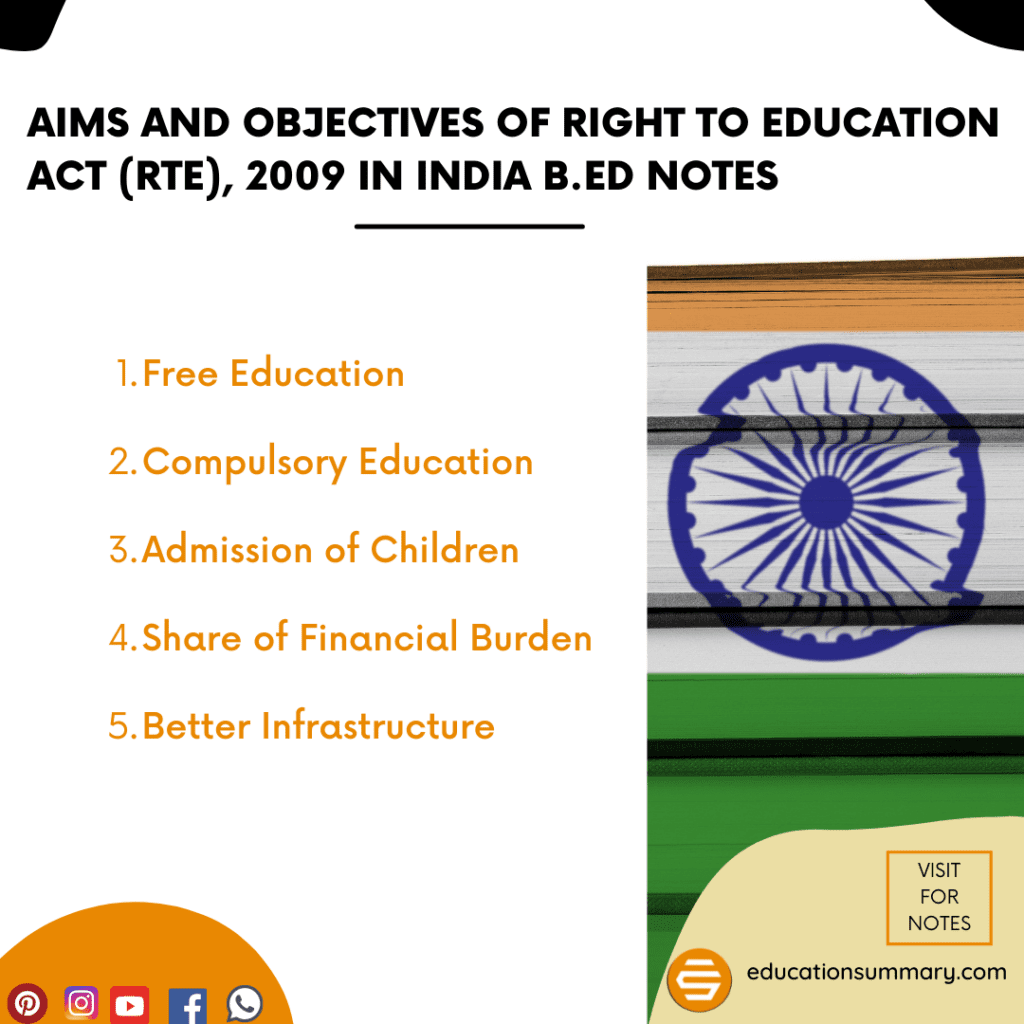Aims and Objectives of Right to Education Act (RTE), 2009 in India B.Ed Notes
Back to: Education in Contemporary India – Unit 2
The Right to Education Act (RTE) is enacted to make the right to education a fundamental right in the country. It marks a watershed in the Indian education system and that is why it is essential legislation. In August 2009, Parliament passed the act and came into force in 2010. Following this, India became one among the 135 countries that have made education a fundamental right of every child.
Under Article 21 A of the 86th Constitutional Amendment (2002) in the Indian Constitution, “The State shall provide free and compulsory education to all children of 6 to 14 years in such manner as the State may by law determine.”
The main aims and objectives of RTE (2009) are as follows:
Free Education
RTE aims to offer free and compulsory education to children until the completion of their elementary education. The word ‘free’ implies that no fee is payable by the child which may prevent him/her from completing education.
Compulsory Education
As per the Act, ‘compulsory education’ refers to an obligation on the government’s part to ensure the enrolment, attendance, and completion of elementary education.
Admission of Children
The Act aims to offer means and resources for the enrolment of a non-admitted child to a class of his/her appropriate age.
Share of Financial Burden
It aims to protect the child’s education by reminding the duties of respective governments, the local authorities and parents. It fosters the share of financial burden between the central and state governments.
Better Infrastructure
Based on the standards and norms for Pupil Teacher Ratios (PTR), it aims to improve the infrastructure and buildings, working days of the school for the students and teachers.
Avoid Inequality
It aims to remove the urban-rural imbalance in teacher postings through the prohibition of teachers’ employment for non-educational work, apart from census, elections, and disaster relief work.
Trained Teachers
The Act aims to appoint teachers who are appropriately trained and qualified.
Reduce Harassment
The Act aims to remove mental harassment and physical punishment through the prohibition of the same.
The Act envisages that the academic curriculum must be developed according to the values enshrined in the Indian Constitution. It should foster the all-round development of the child. The educational system must be both child-centric and child-friendly.


